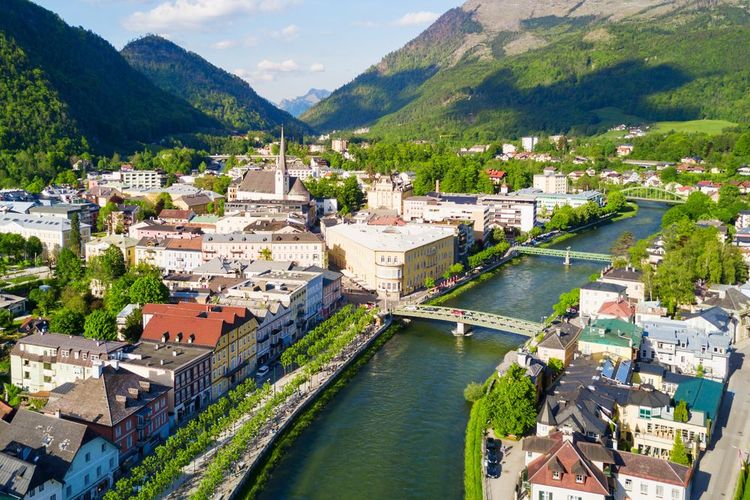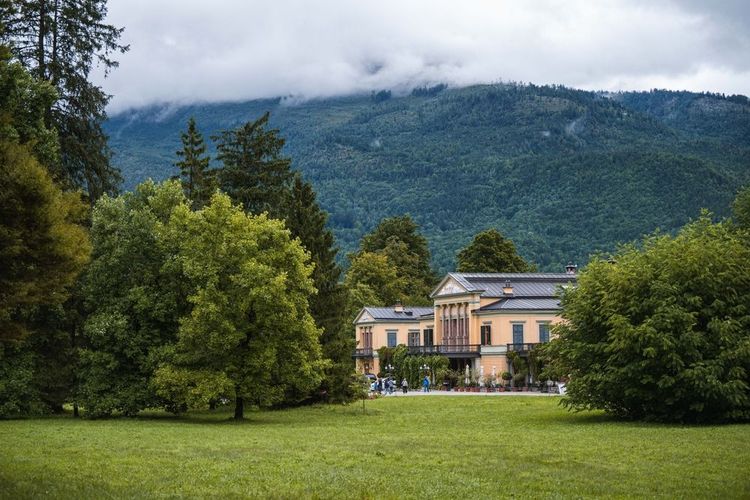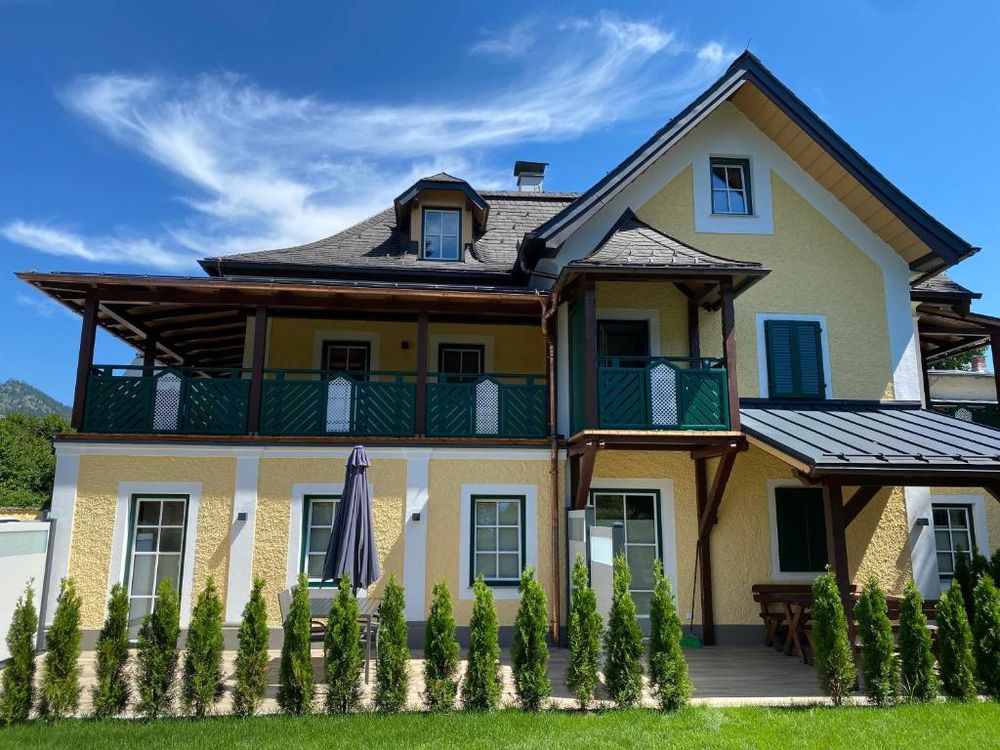The powerful House of Habsburg was in trouble: Archduke Franz Karl and his wife Sophie of Bavaria were unable to have children. The strength of the empire, which at that time (early 19th century) was one of the most important empires in the world, depended on their offspring. They spent many years without finding a remedy, until a doctor recommended a therapy that was just coming into vogue at the time. He ordered them to bathe in the salt pans of Bad Ischl, a mere 50 kilometres from Salzburg in the Salzkammergut region of Austria. Months later, Franz Joseph I of Austria, the future emperor, was born.
This European Capital of Culture 2024 is well seasoned: stories of emperors and empresses, the ignitor of the First World War, lots of art and the best gingerbread biscuits.

Bad Ischl: Capital Europea de la Cultura 2024
- © saiko3p / ShutterstockThe archduke and his wife, delighted with the result, continued to visit the little town of Bad Ischl from time to time, which was already beginning to attract the interest of various personalities and was on its way to becoming a fashionable, elegant spa resort. It was a very important trading centre and economic epicentre because of its salt mines (a very valuable commodity at the time), but it was Franz Joseph I who really embraced this place and caused it to grow.
Of the 86 summers the emperor spent, he spent 83 in Bad Ischl. He was particularly fond of the forests and mountains surrounding the town.

La villa del emperador y sus alrededores.
- © Rudolf_Prchlik / ShutterstockIt was in this city that he married Elizabeth of Bavaria, the much adored and controversial Sisi. As a wedding gift, the Emperor's parents gave him the Imperial Villa, Kaiservilla, which is more of a palace than anything else, and used it as a summer house. This too can still be visited, even though the great-grandson, Archduke Markus Emanuel Salvator, still lives there.
Two centuries later, Bad Ischl has not lost its touch. It is still a favourite summer resort for Austrians, but not any more. They have exchanged salt for culture: architecture, art galleries, gastronomy, the preservation of natural areas and a privileged music scene now attract people from all over the world, eager to soak not only in its thermal baths, but in the cultural influence they have. This earned them the recognition of European Capital of Culture 2024, whose programme has as its motto "culture is the new salt".
In addition to the city's rich agenda for this year, we will take a brief but effective tour through the treasures of Bad Ischl and the Salzkammergut region, the true great love of Franz I of Austria.
Imperial architecture
Sisi and Franz Joseph I of Austria came to Bad Ischl every summer, but of course they did not come to their Eden alone. After him came nobles, aristocrats and bourgeois who wanted to be close to power, and to enjoy the favourite place of the great Franz, who claimed that there was no place like it to enjoy the summer. They began to build their villas and mansions here, many of which are still standing in an architectural spectacle.
Hotels, cafés, casinos and promenades were built for Austrian celebrities and the curious from the rest of Europe. For example, there is the Café-Konditorei Zauner, founded in 1832 and a favourite of the Austrian monarchy.
Of the many villas that define the style of this town, the Sisi and Emperor's Villa, the Kaiservilla, where Franz Joseph I of Austria signed the war treaty against Serbia, which triggered the conflict that led to the Second World War, obviously stands out.
Also worth seeing are Villa Blumenthal, Villa Serlein and Villa en der Traun, where the musician Franz Lehár wrote the operettas "Zarewitsch", "Paganini" and "The Land of Smiles".
Where to stay in Bad Ischl
 Bad Ischl
Bad Ischl
Im Kurpark
A flat with all services and beautiful views.Franz I of Austria's favourite thing to do
Bad Ischl is a beautiful town, but what has really made it stand out over the years is its natural wealth. The salt mines and Lake Traunsee are two of its most outstanding natural attractions. To get to Mount Katrin - where the emperor liked to go hunting - you can take the cable car, which takes you up to the heights in prams for four, over spectacular views.
You can hike through history: on a tour through the mountains and forests around Bad Ischl, you can discover the paths and hiding places of resistance fighters and deserters during National Socialism, as well as some high-ranking Nazis.
In keeping with tradition, it is a must to take a dip in the town's thermal baths. EurothermenResort Bad Ischl is one of the many options, but this one has a swimming pool overlooking the town and in addition to the brines there are various relaxation treatments.
Klimt and a secret wartime art gallery
Gustav Klimt, the painter most famous for his work The Kiss, spent many seasons in the Salzkammergut region. Lake Attersee was one of his favourite landscapes, which he depicted in numerous works. Among the canvases that emerged from his summers in the area are Kammer Castle, The Avenue to Kammer Castle and Cottage by the Attersee.
The region is also home to one of the most controversial art galleries in the modern world. During World War II, Hitler and Austrian art dealers loyal to the dictator hid the Salzkammergut in order to safeguard masterpieces of European art history that they had usurped from invaded nations, many of which were already in ruins. Part of this collection can be seen in the Kaiservilla.
An important focus of the agenda for 2024, when Bad Ischl is European Capital of Culture, is on art exhibitions. You can check it out at this link
Flavours of Bad Ischl
Austria is generally known for its delicious cakes. But from Bad Ischl comes Franz Tausch, a gingerbread that has been a benchmark for more than two centuries. One of the secrets of this recipe is the amount of time the dough is left to rest before baking, sometimes for months.
Also very traditional in the area is the tavern culture. Long tables, jars of frothy beer and live traditional music accompany rich and heavy dishes. This 2024 there will be tavern parties, with new chefs, artistic interventions and reinventions of this great tradition.





